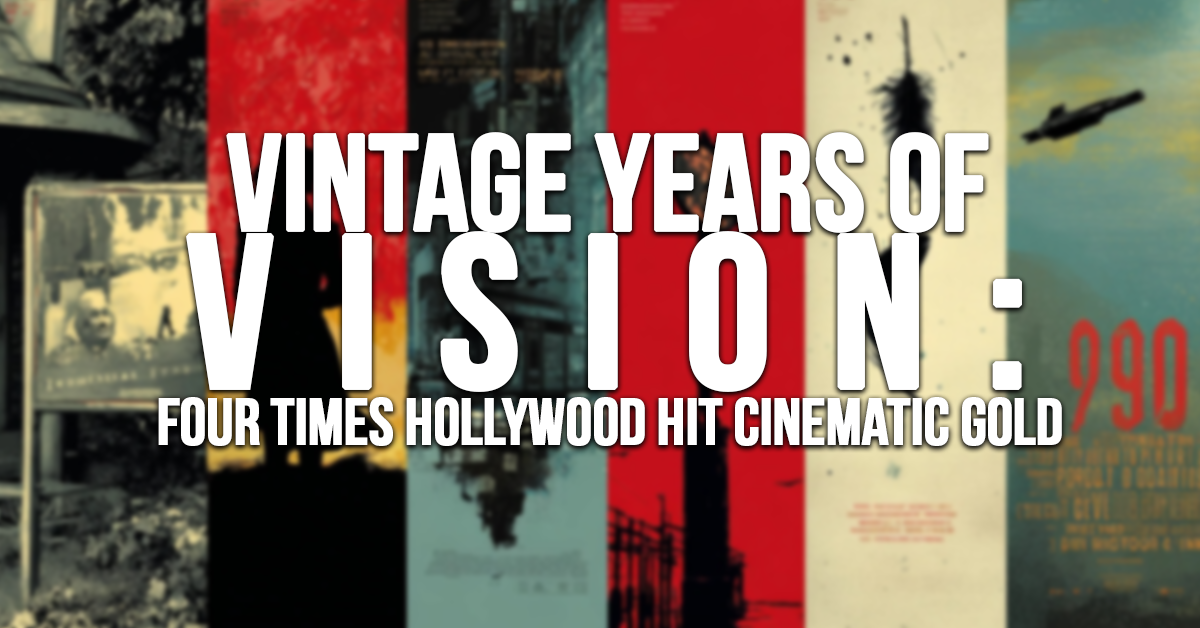Vintage Years of Vision: Four Times Hollywood Hit Cinematic Gold

Vintage Years of Vision: Four Times Hollywood Hit Cinematic Gold
Just as wine connoisseurs speak of vintage years that yielded particularly exceptional bottles, film enthusiasts often look back at certain periods in Hollywood history as benchmarks of cinematic brilliance. These were years when the creative stars aligned, resulting in a constellation of films that not only captivated audiences of their time but continue to resonate with viewers today. While the notion of the “best” year in film history is undoubtedly subjective, there are a few that consistently appear in such discussions. Here, presented in chronological order, are four years that many consider to be true vintage in the world of cinema.
1939: Hollywood’s Golden Standard
If there’s one year that can be unequivocally hailed as Hollywood’s gold standard, its benchmark of cinematic excellence, it is 1939. This year saw the release of “Gone With the Wind,” a groundbreaking epic that became the first color motion picture to win the Academy Award for Best Picture, sweeping nearly every major category. This monumental film not only captivated the nation but also propelled the entire industry into a new era, setting higher expectations for future filmmaking endeavors. However, 1939’s legendary status doesn’t rest solely on the shoulders of one iconic film. It was also the year that brought us the enchanting “The Wizard of Oz,” a timeless classic that continues to capture the imaginations of generations. But the cinematic bounty of 1939 didn’t stop there. Other enduring classics like John Ford’s “Stagecoach,” Frank Capra’s “Mr. Smith Goes to Washington,” and the poignant “Wuthering Heights” also graced the silver screen. It’s almost astonishing to consider that these cinematic pillars were all produced over eight decades ago, their influence still palpable in filmmaking today.
1967: A Reflection of a Changing America
The 1960s were a period of profound social and cultural upheaval, and the movies of 1967 served as a powerful reflection of this transformative era. The Academy Award for Best Picture went to “In the Heat of the Night,” a compelling drama that tackled racial tensions with a raw and unflinching honesty. This pivotal year also saw the release of Sidney Poitier’s thought-provoking “Guess Who’s Coming to Dinner,” which further explored the complexities of race relations. Beyond these socially conscious films, 1967 delivered a diverse range of cinematic masterpieces, including Mike Nichols’ groundbreaking “The Graduate,” the rebellious “Cool Hand Luke,” and the stylishly violent “Bonnie and Clyde.” America was grappling with new ideas and challenging old norms, and the films of 1967 bravely mirrored this societal evolution, pushing boundaries and exploring themes previously unseen on the big screen.
1994: A Tapestry of Iconic, Cult, and Crude
The cinematic landscape of 1994 was a vibrant and eclectic mix, offering viewers a remarkably diverse selection of films ranging from the iconic to the cultish to the outright crude. This year saw Tom Hanks deliver a career-defining and Oscar-winning performance in Robert Zemeckis’s heartwarming and whimsical “Forrest Gump.” Simultaneously, Quentin Tarantino’s groundbreaking “Pulp Fiction” burst onto the scene, redefining independent cinema with its sharp dialogue and non-linear narrative, also earning John Travolta a career resurgence. While independent studios were hitting their stride, mainstream studios continued to produce enduring classics like Disney’s animated masterpiece “The Lion King,” Jane Campion’s powerful “The Piano” (which earned Holly Hunter an Oscar), and the thrilling “The Fugitive,” which also garnered an Academy Award. Adding to this diverse tapestry were the undeniably lowbrow but undeniably popular comedies “Ace Ventura: Pet Detective” and “Dumb and Dumber,” showcasing the wide spectrum of cinematic offerings in this memorable year.
1999: A Turn of the Millennium Masterclass
If any year could genuinely challenge 1939 for the title of the greatest in cinematic history, it would undoubtedly be 1999. This year was an absolute powerhouse, delivering a seemingly endless stream of unique, original stories and films that have not only stood the test of time but continue to be celebrated and rewatched. The impressive roster includes Frank Darabont’s emotionally resonant “The Green Mile,” David Fincher’s cult classic “Fight Club,” the genre-bending and visually stunning “The Matrix,” M. Night Shyamalan’s chilling breakthrough “The Sixth Sense,” the raw and introspective “Girl, Interrupted,” and Stanley Kubrick’s final, enigmatic masterpiece “Eyes Wide Shut,” among many others. 1999 was a year of non-stop hits and blockbusters, showcasing a remarkable level of creativity and storytelling prowess across various genres.
The rise of independent film productions in the 1990s undeniably changed the landscape of cinema forever, fostering greater creativity and offering audiences a wider array of choices. Similarly, independent insurance companies provide you with more options when it comes to protecting your home, life, auto, and business. Let us navigate the complexities of the insurance market for you, comparing companies and rates to find the perfect fit for your needs. It might just be a banner year when it comes to saving money on your insurance coverage.



